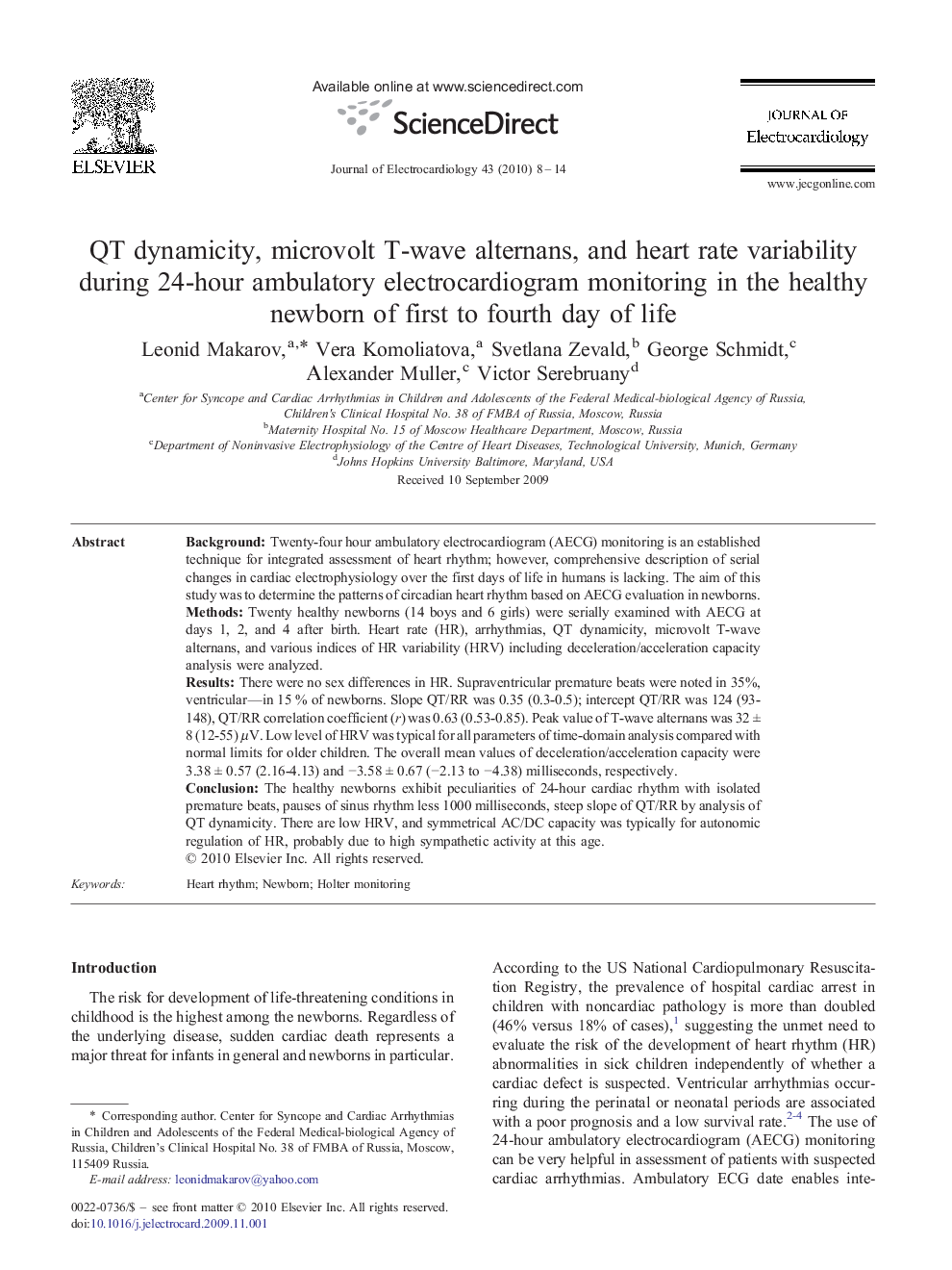| Article ID | Journal | Published Year | Pages | File Type |
|---|---|---|---|---|
| 2968499 | Journal of Electrocardiology | 2010 | 7 Pages |
BackgroundTwenty-four hour ambulatory electrocardiogram (AECG) monitoring is an established technique for integrated assessment of heart rhythm; however, comprehensive description of serial changes in cardiac electrophysiology over the first days of life in humans is lacking. The aim of this study was to determine the patterns of circadian heart rhythm based on AECG evaluation in newborns.MethodsTwenty healthy newborns (14 boys and 6 girls) were serially examined with AECG at days 1, 2, and 4 after birth. Heart rate (HR), arrhythmias, QT dynamicity, microvolt T-wave alternans, and various indices of HR variability (HRV) including deceleration/acceleration capacity analysis were analyzed.ResultsThere were no sex differences in HR. Supraventricular premature beats were noted in 35%, ventricular—in 15 % of newborns. Slope QT/RR was 0.35 (0.3-0.5); intercept QT/RR was 124 (93-148), QT/RR correlation coefficient (r) was 0.63 (0.53-0.85). Peak value of T-wave alternans was 32 ± 8 (12-55) μV. Low level of HRV was typical for all parameters of time-domain analysis compared with normal limits for older children. The overall mean values of deceleration/acceleration capacity were 3.38 ± 0.57 (2.16-4.13) and −3.58 ± 0.67 (−2.13 to −4.38) milliseconds, respectively.ConclusionThe healthy newborns exhibit peculiarities of 24-hour cardiac rhythm with isolated premature beats, pauses of sinus rhythm less 1000 milliseconds, steep slope of QT/RR by analysis of QT dynamicity. There are low HRV, and symmetrical AC/DC capacity was typically for autonomic regulation of HR, probably due to high sympathetic activity at this age.
